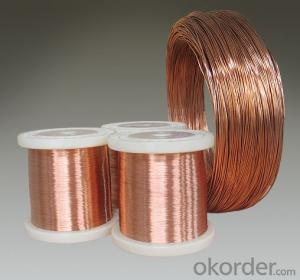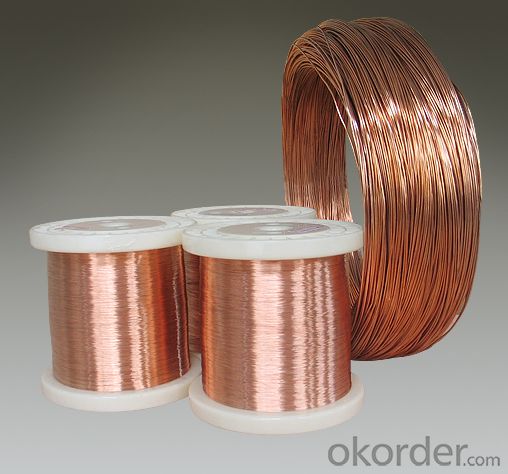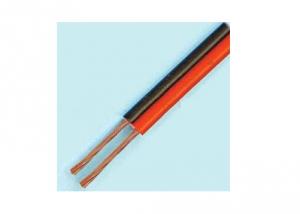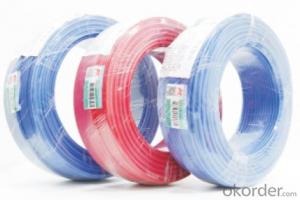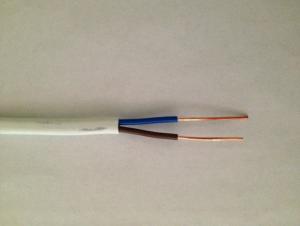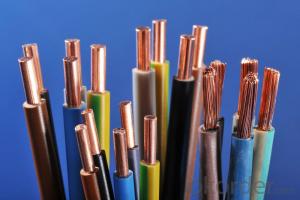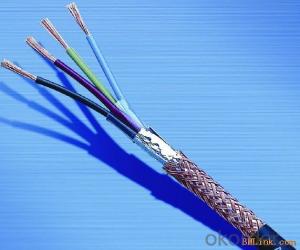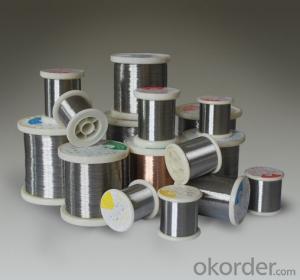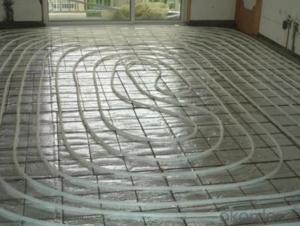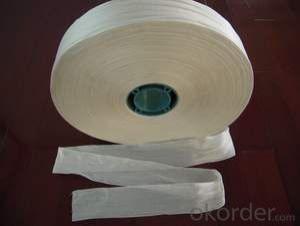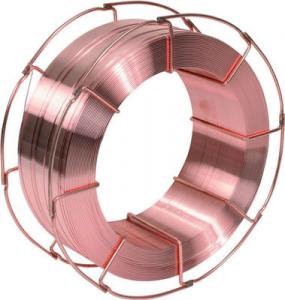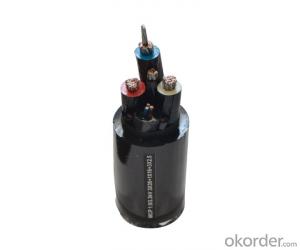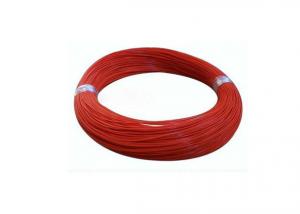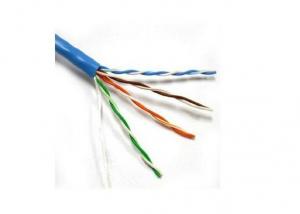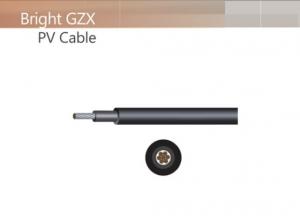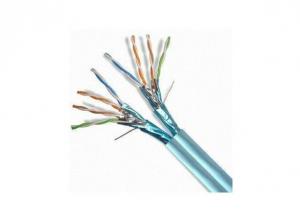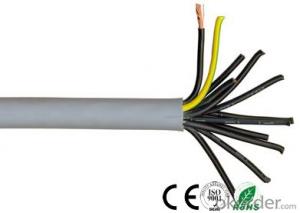Copper-based low resistance heating alloy wire
- Loading Port:
- Shanghai
- Payment Terms:
- TT OR LC
- Min Order Qty:
- 100000 m
- Supply Capability:
- 1000000 m/month
OKorder Service Pledge
OKorder Financial Service
You Might Also Like
Thermocouple Wire
A Thermocouple is a temperature measuring device consisting of two conductors of dissimilar metals or alloys that are connected only at the ends. When the ends are at different temperatures a small voltage is produced in the wire that can be related directly to the temperature difference between the ends. If the temperature at one end is known, the temperature at the other end can be determined.
Application:
Thermocouple wire or extension grade wire is recommended to be used to connect thermocouples to the sensing or control instrumentation. The conditions of measurement determine the type of thermocouple wire and insulation to be used. Temperature range, environment, insulation requirements, response, and service life should be considered.
What do we have?
Thermocouple wire ( extension/compensation/compensating):
Type: K, T, N, E, J, L, B, R, S
Insulation or jacket: PVC, Telflon, PFA; Silicon rubber, Fiberglass, Quartz Fibre.
Sheild: Tin-coated copper braid/Stainless steel braid sheild.
Calibration Type Characteristics
Type J (Iron vs Constantan) is used in vacuum, oxidizing, inert or reducing atmospheres. Iron element oxidizes rapidly at temperatures exceeding 1000ºF (538ºC), and therefore heavier gauge wire is recommended for longer life at these temperatures.
Type K (CHROMELvs ALUMEL) is used in oxidizing, inert or dry reducing atmospheres. Exposure to vacuum limited to short time periods. Must be protected from sulfurous and marginally oxidizing atmospheres. Reliable and accurate at high temperatures.
Type T (Copper vs Constantan) is used for service in oxidizing, inert or reducing atmospheres or in vacuum. It is highly resistant to corrosion from atmospheric moisture and condensation and exhibits high stability at low temperatures; it is the only type with limits of error guaranteed for cryogenic temperatures.
Type E (CHROMELvs Constantan) may be used in oxidizing, inert or dry reducing atmospheres, or for short periods of time under vacuum. Must be protected from sulfurous and marginally oxidizing atmospheres. Produces the highest EMF per degree of any standardized thermocouple.
Type N (Nicrosilvs Nisil) is used in oxidizing, inert or dry reducing atmospheres. Must be protected from sulfurous atmospheres. Very reliable and accurate at high temperatures.
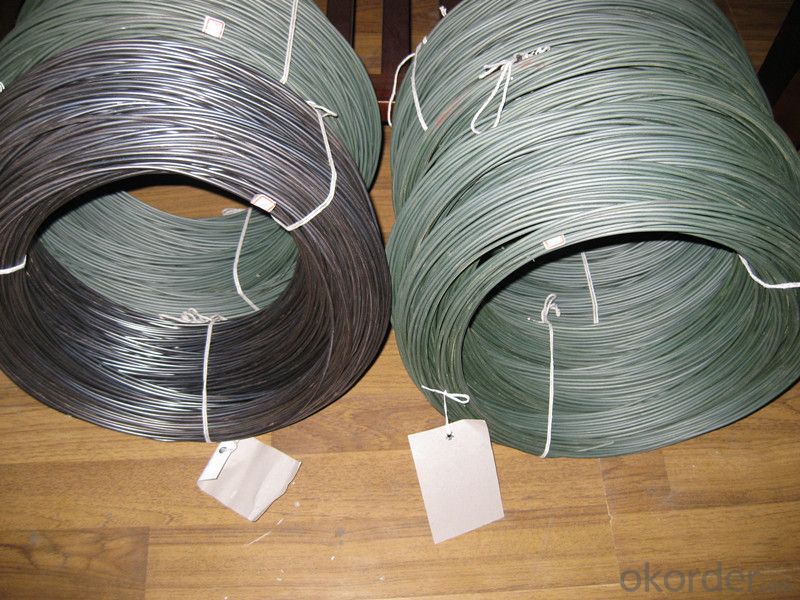
Do you provide free samples?
Yes, we can provide a free sample for testing, If we have sample in stock, The quantity based on the material type, The buyer should bear all the shipping costs.
Please feel free to send us a inquiry and we are looking forward to cooperating with you!
Before you send us a inquiry, please confirm the following information
1. Alloy grade
2. Dimensions of the alloys
3. Surface requirements
4. Size tolerance requirement
5. Quantities
6. Package request
7. Specific end use
8. Other information that may be useful in supplying the most suitable products
| Color code & initial calibration tolerances for thermocouple wire: | ||||||
| Thermocouple Type | ANSI Color Code | Initial Calibration Tolerances | ||||
| Wire Alloys | Calibration | +/- | Overall | Temperature Range | Standard | Special |
| Conductor | Limits | Limits | ||||
| CHROMEL(+) vs. | K | Yellow/Red | Brown | -200° C to -110° C | ± 2% | ± 1.1° C |
| ALUMEL(-) | -110° C to 0° C | ± 2.2° C | ± . 4% | |||
| 0° C to +285° C | ± 2.2° C | |||||
| FB-FB-SSB Physical Properties | ||||||
| Characteristics | ||||||
| Specific Gravity | Insulation | Overall | ||||
| Tensile Strength; psi (min) | 2.54 | 2.54 | ||||
| Elongation; %(min) | 250, 000 at 1000& deg; F(537° C ) | 250, 000 at 1000& deg; F(537° C ) | ||||
| Minimum Bend Radius | 4.8 | 4.8 | ||||
| Abrasion Resistance | 5x O. D. | 10x O. D. | ||||
| Cut Through Resistance | Good | Good | ||||
| Moisture Resistance | Very Good | Excellent | ||||
| Solder Iron Resistance | Good | Good | ||||
| Service Temperature | Excellent | Excellent | ||||
| Flame Test | 260° C continuous 343° C single exposure | 260° C continuous 537° C | ||||
| single exposure | ||||||
| Non-flammable | Non-flammable | |||||
| Thermocouple variety and index | Measurement range C | |
| Variety | Index | |
| PtRh30-PtRh6 | B | 600~1700 |
| PtRh13-Pt | R | 0~1600 |
| PtRh10-Pt | S | 0~1600 |
| NiCr-NiSi | K | -200~1300 |
| NiCr-CuNi (constantan) | E | -200~900 |
| Fe-CuNi (constantan) | J | -40~750 |
| Cu-CuNi (constantan) | T | -200~350 |
| NiCrSi-NiSi | N | -200~1300 |
| NiCr-AuFe0.07 | NiCr-AuFe0.07 | -270~0 |
- Q: explain?thank you veeery much :)
- No, not if that isn't what you want. Energy is lost to the heat instead of going to the motor or whatever you want the power for.
- Q: component of electrical wiring system according the appropriate street light. the voltage power supply and herzt(hz) using for street light.
- That product runs on 12 volts direct current (VDC). A standard receptacle is AC. A standard receptacle in the U.S. is 120 volts, AC. A standard receptacle in the UK is approximately twice that voltage, and is AC. You will need a transformer/rectifier to convert the AC of your countries voltage to 12 VDC DC. The product uses 60 watt bulbs. This means that they will each need 5 amps. The product has 8 bulbs. This means that you will need a total of 40 amps. Therefore, you need to buy a transformer/rectifier that plugs into a standard receptacle and produces at least 40 amps of 12 VDC power. After you buy one, connect it to the cable that comes with the product.
- Q: Hi, I'm finishing part of my basement and will be running new wires and adding electrical outlets. I've some question about the electrical wiring code: I frame the wall with 2x4 with a few inches distance off the concrete wall. 1. When running wire from wall to ceiling joint, can I run the wire around the inner side of the top plate(between studs and concrete wall) instead of drilling hole on the top plate and running through the hole? I will staple the rest of the wire along the stud and joint too, 11/4 inch away to the rim.2. When drilling the hole in the stud for wiring, can I drill the hole closer to the concrete wall but the hole is less than 11/4 to the inner side of the stud? Is this against the code? I know I cann't nail from the inner side after framing:)3. It the 6 feet rule aplly also to basemnent as a recreation room, for all walls?4. Is wall switch-controlled lighting outlet means I have to install switch controlled receptacle or switch controlled light is enough? Thanks for your help!
- Wiring A Basement
- Q: Hello,I changing the engine harness and body harness on my Cary becuase they were cut.Where can I find a electrical or engine harness/body harness diagram for 2009 carmy le 4cyc auto, ????
- At an Auto parts store. they sell books for you cars entire engine, electrical etc systems. also you may try on line
- Q: I would like to wire two wall sconces on either side of my fireplace. I was planning on continuing the electrical circuit from a wall outlet located near the fireplace and including an inline switch. The outlet is on the left side of the fireplace so I was planning on running the wire 6 feet strait up from the outlet, over three feet, installing a new electrical box and mounting the sconce. The question I have is, how can I run the wire to the other sconce on the right side of the fireplace. Can I run the wire in the wall in front of the fireplace? Also is there any electrical codes that require switches to be a certain height off the floor? I live in southern California.
- you want Your switch box to be the same height as your other switches in the room as for getting from one sconce to another if the fire place is ont he 1st floor and the basement ceiling isn't sheet rocked i would suggest drilling a hole from the basement making sure your in the wall send a snake from the basement to where you plan on putting the sconce on the left side pull the wire to the basement cut in your box for the sconce on the right side drill another hole from the basement making sure again your in the wall send the snake up to the hole you cut in on the right side that is the easiest way with the least amount of damage but make sure you measure correctly so if you drill up you don't come through the floor
- Q: I was changing a light fixture in my bedroom today. I took down an old ceiling rose which had the live wire, two neutrals, three loop wires, and 4 earths. I used the brass connectors and kept the wiring the same so all in all i simply connected up the live, neutral, and earth wire the the connectors from the old fixture. I tested the light before i stuck attatched it to its bracket and it worked fine, however when i attatched it to the bracket the brass connectors touched the metal of the new fixture and and blew the upstairs lighting. At first i thought it may be a fuse, so i bought two brand new but to no avail. Any ideas as what could be preventing any of the upstairs lighting from working?
- umm it could be the neutral is loose , you need to check it with a volt meter to see if its on then check each wire splice and i don't know what you mean brass connectors they should be plastic wire nuts
- Q: I have 60 ft and 40 ft of the 1/0 electrical THHN STRANDED wire. I don;t know if be possible to join both, due to I need 95 ft. Does anybody give me an idea? Thanks.
- i could ask you qualified chum, while you're gonna do it besides, bear in suggestions that with any spur off of any furnish, do no longer exceed 13amps, or 3000watts of power from any spur.make certain you upload a 13amp spur fuse field interior the domicile, and placed a 5amp fuse in it to be risk-free notice: that in case you haven't any longer have been given electric powered variations completed by utilising an authorized electrician, it could invalidation any insurance in case of fireplace or death. get a quote from a professional, and use armoured cable for outdoors
- Q: Hi,I am looking at installing a 8l fridge between the seats of my 4x4 ute, as it doesnt have a console. The problem is that i dont know exactly how to wire it up the way i want. I want to install a 12v plug through a rocker switch, so that when the switch is off, the power to the 12v plug is only on when accessories is on with the stereo etc. But i want it so that when the switch is flicked on, the power to the 12v plug is constantly there, whether the key is on or not, and the blue led in the switch is on as well. is this possible? sorry if it is confusing.thanks for any help
- If the new fridge takes more than about 5 Amps, I would run a whole new circuit direct from the car's battery through its own fuse. Then you need a relay that can carry at least 10 Amps through its contacts assuming that's the most current you'll be drawing through the new circuit. Finally, the relay coil will be controlled by both the accessories circuit as well as the new switch as you describe. You need to draw up an electrical schematic showing how the key accessory switch and new switch circuits will control the new relay coil.
- Q: How to use a multimeter to measure the power line barrier
- The general digital set-top boxes are connected through the video TV you find the TV behind the video interface yellow is the image of white and red voice must not plug the wrong set-top box the same and then you stare to change the mouth to clear the glass with the remote control video It's up
- Q: There is a thing that can measure the location of the wire inside the wall, what is this instrument called? What is its working principle? Thank you in detail
- After the HDMI cable is connected, set it as a dual monitor in the display properties, the computer monitor as the main display, the TV as the second monitor, select the extended main display, then open the movie player, drag and drop the mouse with the mouse to the second monitor (TV ), And then full-screen playback can watch movies on television, and this time you can computer monitor Fu top brother hired Xi Ding who Ding Jing start the game. Image does not interfere with each other; do not know whether your graphics card is a separate integrated sound card, I use the Dylan 4850 alone integrated sound card, you can achieve computer users and TV users put the sound, do not interfere with each other.
Send your message to us
Copper-based low resistance heating alloy wire
- Loading Port:
- Shanghai
- Payment Terms:
- TT OR LC
- Min Order Qty:
- 100000 m
- Supply Capability:
- 1000000 m/month
OKorder Service Pledge
OKorder Financial Service
Similar products
Hot products
Hot Searches
Related keywords
